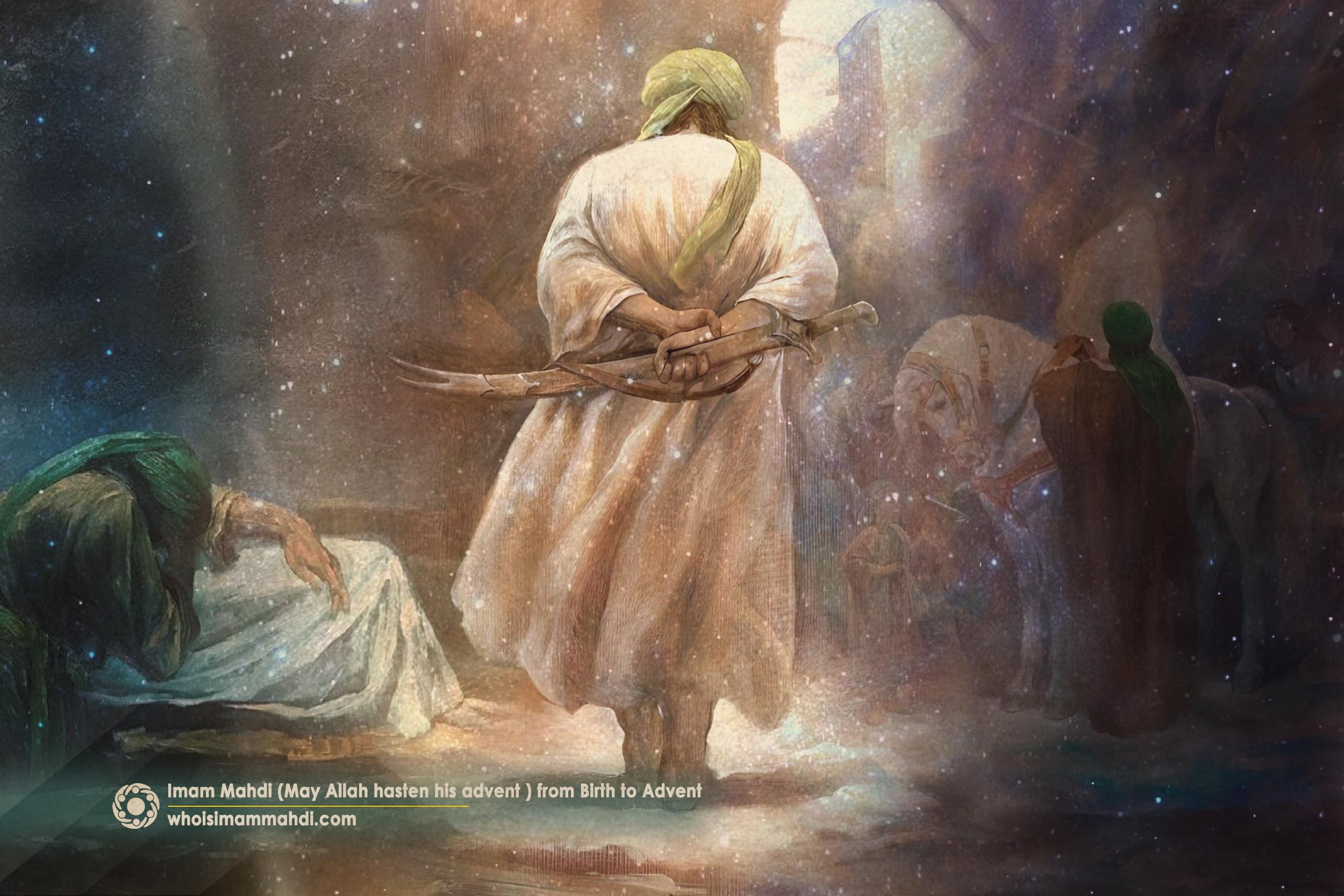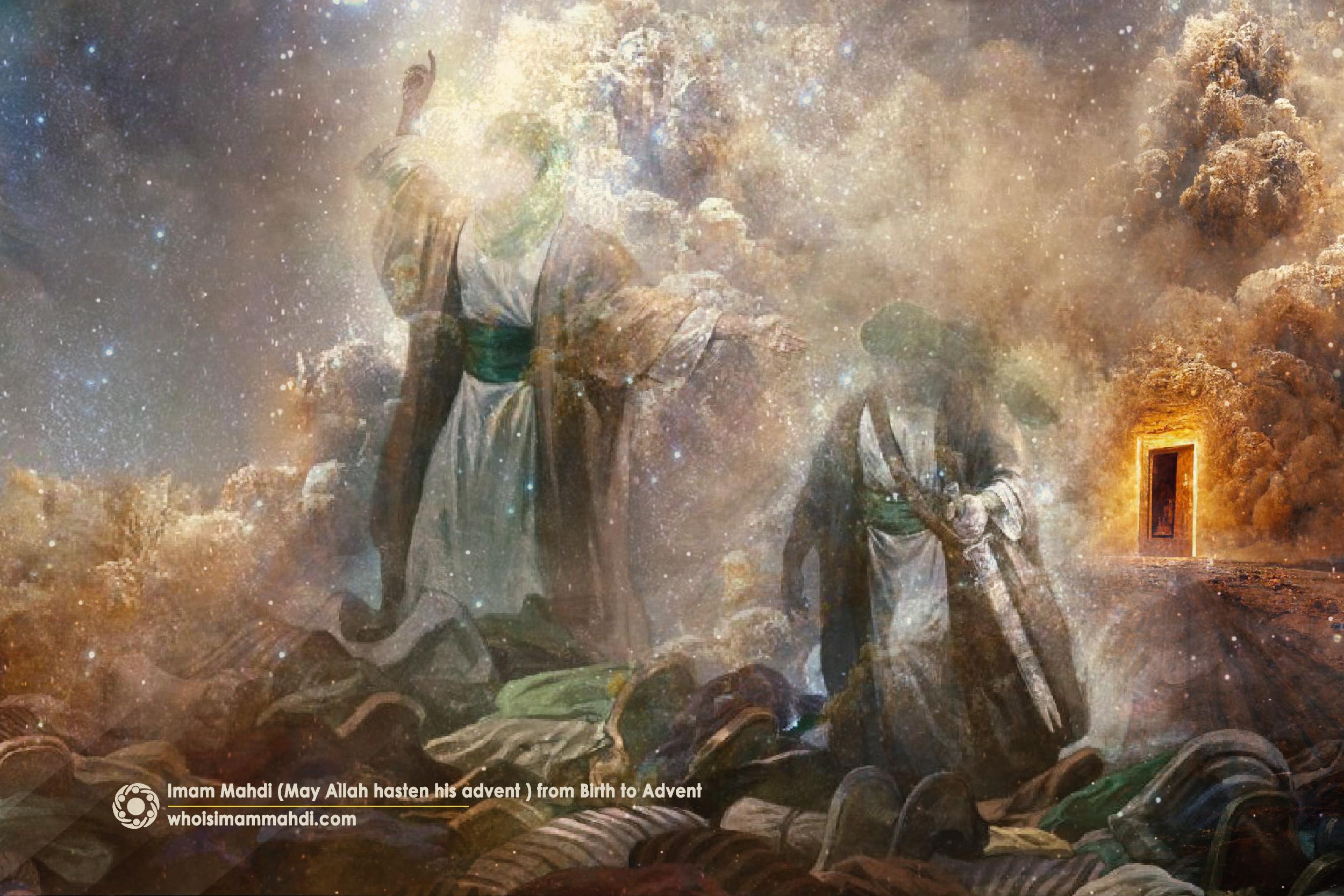A Review of the Era of Imam Baqir (PBUH) and His Actions
Muhammad ibn Ali al-Baqir (PBUH), the fifth Imam in the lineage of the Twelve Imams revered by Shia Muslims, was the son of Imam Sajjad (PBUH). He was born on the 1st of Rajab, 57 AH in Medina and his mother was Fatima, the daughter of Imam Hasan (PBUH). His epithet, “Baqir al-Ulum,” means “the splitter of knowledge,” and it was attributed to him by Prophet Muhammad (PBUH) in the Hadith of Lawh (The Tablet). His Imamate (leadership) lasted for approximately twenty years, a period during which he witnessed the reigns of five Umayyad caliphs. According to historical sources, Imam Baqir (PBUH) was a child at the time of the incident of Karbala and was present in that incident.
He attained the Imamate after the martyrdom of Imam Sajjad (PBUH). But it is necessary to know that it took years for Imam Sajjad (PBUH) to prepare the prerequisites and conditions for the Imamate of Imam Baqir (PBUH) during his own Imamate. If it was not for the efforts, patience, and dedicated struggle of Imam Sajjad (PBUH), the Imamate would not have endured to reach Imam Baqir (PBUH) and it would have disappeared until that day. The Imamate period of Imam Sajjad (PBUH) was a key period in the restoration and revival of the weakened foundations of the Shia school by the Umayyad Caliphate. For years, the first three caliphs of Islam and then the caliphs of the Umayyad Dynasty had fallen like termites on the lives of people’s faith and belief and had overturned the truth of Islam. By the time of Imam Sajjad (PBUH), the once vibrant faith and connection with God had dwindled to a mere shadow, with the true essence of Islam and the Ahl al-Bayt (PBUH) overshadowed, leaving people spiritually adrift.
Imam Sajjad (PBUH) spent thirty-four years striving to revive people’s hearts and return them to God, repairing their relationship with their Creator. Once the love for God began to flow again in society’s veins, and hearts were being revived, the Imam departed from this world, and the continuation of this path was entrusted to Imam Baqir (PBUH).[1]
The conditions of the era of Imam Baqir (PBUH) were different from the era of profligacy and indulgence of the people during the era of Imam Sajjad (PBUH). The people of his era had a keen inclination towards knowledge and learning. They were eager for study, debate, and discourse, and willingly braved long journeys to receive even a glimpse of his knowledge. His divine knowledge, infallibility, sincerity, and expertise were highly esteemed, and people were enamored and captivated by him.
Since the Imam had divine knowledge from God, and the influence of his words was not like that of ordinary people, even scholars and experts from various religions were aware of the depth of his words and his distinct difference from others. It reached a point where it seemed as if the Prophet (PBUH) had come alive, and Imam Baqir (PBUH) was often referred to as Shabih al-Nabi (like the Prophet), and people from different parts of the world circled around him to gain knowledge.
The growing popularity and respect surrounding Imam Baqir (PBUH) alarmed the Umayyad rulers, who saw his influence as a threat to their authority. They began to tighten their grip, limiting his freedom and restricting his reach. Consequently, the Imam’s efforts took on a more serious and secret form, which we will discuss later. Eventually, Imam Baqir (PBUH) was martyred on the 7th of Dhu al-Hijjah, 114 AH, at the age of 57, by Hisham ibn Abd al-Malik, one of the Umayyad caliphs.
Imam Baqir’s (PBUH) Actions during His Imamate
Imam Baqir’s (PBUH) two-decade Imamate could be succinctly characterized as a transformative period that ignited a revolution in Shia knowledge and laid the groundwork for the flourishing of Shia culture. The Imam was compelled to pursue multiple goals simultaneously in accordance with the conditions and needs of his time and take charge of different affairs at the same time. Among the most important actions of Imam Baqir (PBUH) we can mention the following:
Imam Baqir’s (PBUH) Scientific Movement
Until before the time of Imam Baqir (PBUH), Shia jurisprudence and views were limited due to various reasons, such as suppression by the ruling government. The foundation of the Umayyad Caliphate during his era had weakened, and with the Imam’s wisdom, intelligence, and strategic timing, the era of engagement with knowledge and intellectual teachings began. During this period, the Imam focused on teaching and developing Shia culture, which included ethics, jurisprudence, and interpretation of the Quran. He firmly believed that attaining true knowledge and accurate interpretation of the Quran is only possible through the guidance of the Ahl al-Bayt (PBUT), as they possess the divinely bestowed wisdom and insight necessary for its proper understanding. Imam Baqir (PBUH) placed special importance on narrating the hadiths of the Prophet (PBUH), and hadith studies gained significant prominence during his time. Other activities of Imam Baqir (PBUH) included debates with different people, such as debates with a Christian Archbishop and Hisham ibn Abdul Malik. These debates, often arranged by the government to undermine the Imam’s status, clearly demonstrated the difference between the divine knowledge and expertise of the Imam and the worldly knowledge of other scholars.[2]
During Imam Baqir’s (PBUH) era, the nature and quality of people’s interactions with the infallible Imams (PBUT) had changed, and people from various regions came to him to get the answers to their questions and trusted him, whereas the previous Imams often faced limitations regarding the sharing of their knowledge and the extent to which people sought their guidance.
Narrations Published by Imam Baqir (PBUH)
Due to the mischief and malice of the Umayyad rulers and previous caliphs, many hadiths were fabricated, making it difficult to trust the authenticity of narrations. Imam Baqir (PBUH) fought against these distortions and the lies spread by fraudulent narrators and diminished the influence of those who sought to deceive. The reason that there are fewer errors in the authenticity of hadiths and narrations today is that through the dedicated efforts of Imam Baqir (PBUH) and his students, a rigorous process of sifting and verifying hadiths began, separating truth from falsehood.
Other significant actions of Imam Baqir (PBUH) include:
– Teaching and explaining how to be a true religious person and how to interact and deal with the Imam of the time.
– Managing and controlling the fervor of some self-willed people who intended to revolt against the government of the time.
– Explaining the truth of the event of Ghadir as the most important issue in the Islamic world and elucidating the significant rights usurped from Imam Ali (PBUH) after Ghadir.
Imam Baqir’s (PBUH) Efforts in Preparing the Groundwork for the Advent of the Promised Savior
The era of the Imamate of the first eleven Imams lasted approximately 250 years. Since all the Ahl al-Bayt (PBUT) are one light and essentially one human being, only the period and conditions of their Imamate were different. All their actions were connected like a chain, and all of them were somehow preparing the groundwork for the promised global civilization by Imam Mahdi (AJ). Here, we will explain Imam Baqir’s (PBUH) efforts in preparing the necessary groundwork for the advent of the Promised Savior and laying the foundation for an organized civilization.
Explaining Mahdism and the Introduction of the Promised Mahdi by Imam Baqir (PBUH)
One of the most important actions of the Ahl al-Bayt (PBUT) was paving the way for the advent of Imam Mahdi (AJ), introducing and explaining Mahdism, the advent of the Savior, and its signs and conditions. In fact, if they had not addressed this topic beforehand and had not unveiled it, no one would have gained knowledge about this issue and its various aspects. Imam Baqir (PBUH) was the one who first tackled this complex and controversial topic head-on. His groundbreaking work laid the foundation for understanding this subject. He played a very effective role in introducing Imam Mahdi (AJ), the signs of his advent, the conditions for the advent, and the features of the era before and after the establishment of the Noble Rule of the Righteous. His teachings ignited a spark of awareness, hope, and readiness among the Shia community, preparing them for the momentous arrival of the awaited savior.
Imam Baqir (PBUH) introduced the people of Salman Farsi, i.e., the Iranians, as the facilitators of the advent and spoke of them openly in a narration. He gave the glad tidings of a revolution in Iran that was supposed to pave the way for the advent. He respected this revolution very much and expressed its definite influence on the advent; he said, “If I had lived to that day, I would have preserved my life for the Imam of the time.”[3] This statement indicates that the time gap between the Iranian Revolution and the advent of Imam Mahdi (AJ) is very short, and there is not much of a time gap. All the narrations of the Imam regarding the Savior in the End Times are collected in the fourth volume and a small part of the fifth volume of the book Mu‘jam al-mawḍū‘ī li-aḥādīth al-Imām al-Mahdī.[4] The Imam has spoken about the birth, name, lineage, characteristics, occultation, features of the era before the advent, wars before the formation of his rule, and the period after his advent.
Establishing Organizational Structures
One of the most important operational and strategic actions of Imam Baqir (PBUH) was related to organizational structuring.[5] We often embark on noble cultural endeavors, brimming with potential, only to see them wither and waste away due to poor management or a lack of a clear, organized plan. It is like scattering seeds haphazardly across the ground: Some sprout and thrive, while others are lost to the birds, parched by the sun, or rot in the earth. This haphazard approach to cultural work yields limited results and fails to reach its full potential. A skilled gardener and farmer know that in addition to planting seeds, they must take care of them to bear fruit and yield results.
Imam Baqir (PBUH) also managed this task well, and with strong covert organization, trained and developed a group of his best, most pious, and elite companions; he specifically trained them and sent them to different parts of the world. These individuals secretly communicated with one another, and all became the pillars, deputies, and representatives of the Imam. These deputies were known as “Guardians of Secrets”; they pursued matters related to the Imam, including propagating religion, guiding and directing people, collecting religious dues, answering religious questions, finding interested and capable individuals, and countering negative propaganda against the Imam.
The era of Imam Baqir (PBUH) was the era of the rise of the Networks of Delegation. The network of delegation was a set of carefully structured activities connecting the Imam’s representatives with the leader of the network, that is, Imam Baqir (PBUH). This network emerged during the time of Imam Baqir and Imam Sadiq (PBUT) and reached its peak in the eras of the following Imams.
[1]. For more information on the Imamate of Imam Sajjad, see Sayyid Ahmad Reza Khizri, “History of the Shi‘a in the Time of Imam Sajjad,” Message of Thaqalayn, vol. 12, no. 3, Autumn 2011.
[2]. Ahmad al-Tabrisi, Al-Ihtejaj ala Ahl al-Lijaj, vol. 2, p. 323; Ali ibn Isa al-Irbili, Kashf al-Ghumma, vol. 2, p. 331.
[3]. Muhammad Ibn Ibrahim, Al-Ghaibah Al-Nu’mani, Book 2, Ch. 14.
[4]. Ali Kurani, Mu‘jam al-mawḍū‘ī li-aḥādīth al-Imām al-Mahdī. Beirut: Dār al-Murtaḍá lil-Ṭibā‘ah wa-al-Nashr wa-al-Tawzī‘, 2009.
[5]. Ali Khamenei, A 250-Year-Old Person, trans., The Ahl al-Bayt (as) World Assembly, section on Imam Baqir.






































































